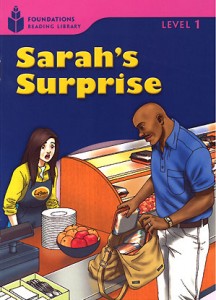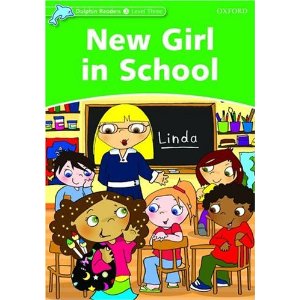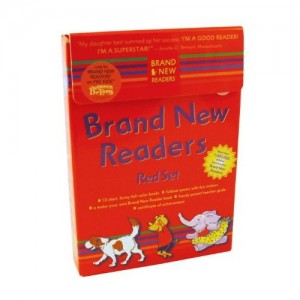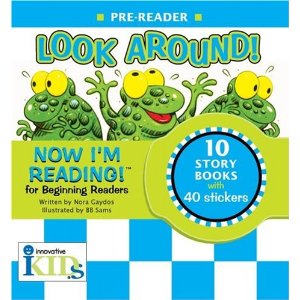business curriculum EFL eikaiwa expectations kids language courses Language learning listening school management very young learners
by sendaiben
4 comments
Teaching English to very young children
The other day I was idly watching one of our teachers working with a couple of our students: two sisters, three and one and a half, who have a play style class with a teacher while their mum has a private lesson with another teacher.
I have to admit, I have always been fairly sceptical about teaching very young children in an EFL context. I’m sure it can’t do any harm, but I hadn’t really seen much benefit either. Basically if the parents were happy to pay us to play with their children for 40 minutes a week, and the children enjoyed it, no problem. It wasn’t something we advertised, but we did consider special requests.
However, about halfway through the class I saw something that completely challenged my assumptions.
The two students rarely speak English, beyond ‘hello’ and ‘see you’ at the beginning and end of the class. Their teacher only uses English with them, and they talk to him in Japanese. The ‘class’ consists of playing together with a variety of toys and objects we have in the classroom. The children decide what to play with, and how they want to play, but we manage that by adding or removing toys.
The teacher was playing with a doll, making it sit down or walk around. At one point, the older sister asked in Japanese “Why is the doll sitting down?”, to which the teacher replied in English “Her legs are tired.” The students then said in Japanese, without missing a beat and completely naturally “Oh, her legs are tired. I see.”
I almost fell off my chair.
The student didn’t have enough to be able to guess that meaning from the context. The teacher did not use any gestures or indicate the doll’s legs. She clearly understood what he said.
I think I’m going to have to rethink the very young learners thing…
curriculum EFL eikaiwa ES extensive reading Foundations Reading Library kids language courses Language learning readers Reading Review reviews school management
by sendaiben
4 comments
Foundations Reading Library
Until now I’ve been focusing on phonics and basic readers. Today I’d like to go to the other extreme and look at a series that bridges the gap between children’s readers and ones aimed at older learners.
The Foundations Reading Library, co-authored by my friend Rob Waring, was revolutionary when it came out. A reader series aimed at teenagers, with minimal headword counts that nevertheless succeeded in being interesting and accessible? I don’t know of any others.
Level one starts with just 50 headwords, so normal junior high school students can have a go at getting through the books. For our students who have come up through phonics and children’s readers, these books are cake.
Foundations Reading Library books are available singly, in level packs, and also in collected anthologies. I only just discovered the latter ones, and they seem fairly promising. They have all the books from that level in one volume, cost about half as much as buying them individually, but have the drawback that you can’t give each book to a different student. The covers also seems flimsier and I’m worried about how well they will last. Still, for some teaching situations, they might be a cheap way to stock up.
You can also get CDs and lesson planners for all the levels, but I don’t have much experience with these.
My thoughts:
1. some of the books are better than others, but overall this series is extremely accessible and interesting for students from elementary school all the way to adults. I also use them with university students and they often come out as the most popular series at low level
2. the gaps between levels are very small, making it easy to progress from one to the next
3. the recurring characters are constant through the series and readers can really get to know them
4. there are nowhere near enough books at each level, and unfortunately there won’t be any new ones coming out
Basically, these books still occupy a fairly unique niche, and they do their job extremely well. I wish there were more of them. Some similar alternatives include the Building Blocks Library, by MPI, and the Page Turners series by Cengage, but they aren’t exactly the same…
Anyone else use Foundations? Did I miss anything?
curriculum Dolphin Readers EFL eikaiwa ES kids language courses Language learning readers Reading Review reviews school management teaching
by sendaiben
2 comments
Dolphin Readers
Dolphin Readers, published by OUP, are strange beasts. I almost didn’t include them in my roundup, because I don’t think they actually are, strictly speaking, readers.
Rather, they are extremely well put-together supplementary workbooks. They consist of five levels (starter and one to four) and there are eight books at each level. The series is available as a set, or individually. There is also a version that includes CDs, although I haven’t heard them so can’t comment.
Each book has two parts, the text and the questions/exercises. You could conceivably try to just use them as readers, but the questions are so well integrated that I think it would be difficult to do that.
My thoughts on Dolphin Readers:
1. the books are very well-designed, printed on thick paper and with attractive artwork
2. they are fairly reasonable: just over 600 yen on Amazon.jp, and less than 20,000 for the full pack of 40
3. the exercises are very well-integrated with the text and practice vocabulary and grammar in a very student-friendly way
4. our students and staff both like the books
Where this series shines is in the classroom. I think the books are designed to be bought by students and used as workbooks in class or for homework. For us, that could get kind of pricey and we already have our students buy a lot of supplementary material, so instead we use the readers in class as a teacher-led exercise where students read the text and answer the questions orally. It’s a great filler activity for those extra three to five minutes that crop up occasionally.
Many people I have talked to prefer the upper levels (three and above), and I agree that they are perhaps more interesting, but I have found all of the books useful. It’s a great resource to have in the classroom.
Any other Dolphin Reader users? I’m very interested in hearing how other people use them too.
Brand New Readers curriculum EFL eikaiwa ES kids language courses readers Reading Review reviews school management teaching
by sendaiben
2 comments
Brand New Readers
Continuing my series of children’s reader reviews, I’d like to talk about a little-known gem today.
Brand New Readers (official site here) have a terrible, genetic name, but are actually wonderful.
They are not phonics-based, but rather are short, well-written, engaging stories with very attractive illustrations and great characters. They are available from Amazon.jp in a variety of formats, including hardcover books with several stories and boxed sets of paperback individual stories. We have both, and get a lot of use out of them. The boxed sets in particular are great value: they cost less than 1000 yen for ten books, some stickers, and a couple of other certificates and parent/teacher guides.
My take on the series:
1. great characters and stories (I like Piggy and Mouse the best)
2. easy to read and fairly repetitive, useful language
3. not phonics-based, but good for students starting out with reading post-initial phonics
4. great value
I love this series, and recommend it both for storytelling in class (the stories are just the right length to read one or two at the end of the class) and for students to read individually, either in class or at home.
curriculum EFL ES extensive reading kids phonics readers Reading reviews school management teaching
by sendaiben
2 comments
Now I’m Reading phonics readers
Now I’m Reading is a phonics program consisting of five levels of books, from pre-reading to independent. The books come in packs of 10 in a durable and attractive binder. Books can be read as a set or taken out to be read individually. The official website contains lots of information about the series, as well as downloadable activities.
Like Bob Books, this is also a great value option. One set is just over 1300 yen from Amazon.jp, making individual books cost about 130 yen. The production values are better than Bob Books: the binders are excellent and the books are printed in colour on thicker paper. The illustrations are also very attractive.
My take on the books:
1. the books are attractive and appealing to students (I like them too)
2. the pre-reader level (pictured above) makes great mini-story books to read aloud in class (it is not phonically graded)
3. the phonics levels are well-structured, but the stories suffer somewhat from phonics-itis (where the story comes second to the phonics target, resulting in awkward or boring stories)
4. great value
5. easy for students to read individually in class or take home for homework
On the whole, I am quite a fan. While they are not as good as Jelly and Bean (mainly because of how the phonics stories are constructed), they are much cheaper and clearly better than similar products in the same price range. If nothing else I really recommend the pre-reader level as really cheap story books.
Has anyone else used Now I’m Reading?




